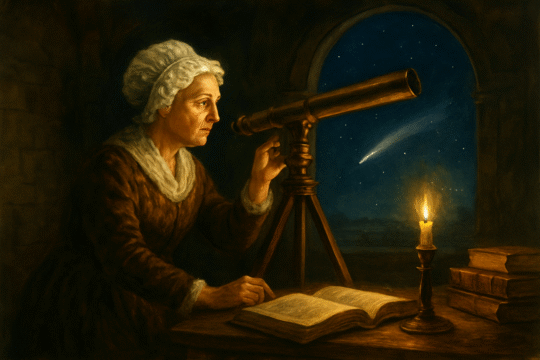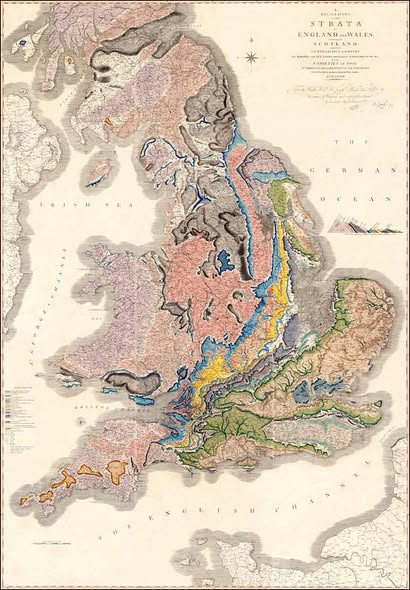What I’m about to tell you might blow your mind. I was honestly shocked when I first learned about it, and nobody would blame you if you’ve never heard it either.
I found this story while working on another one. I was researching The Map That Changed How the World Saw Itself—the one from 1569 by Gerardus Mercator, the cartographer who changed how we look at the Earth from above. You can find a link to that story in the comments.
But during that research, I came across something else. Another map. One that didn’t show the surface of the world at all. It showed what was hidden underneath it.
And the strange thing is, almost no one talks about it.
The man behind this forgotten map was William Smith. He lived in England in the late 1700s, working as a surveyor—an ordinary man who measured land for canals and mines. Nothing about him said “scientific revolution.” He wasn’t rich. He wasn’t famous. He didn’t have a title or a lab.
But he paid attention.
As workers cut into the ground, he noticed something unusual. The same layers of rock appeared again and again in the same order, no matter where he went. And inside each layer were fossils—shells and plants and strange shapes of animals long extinct.
He started to wonder if the entire country was built like this, stacked in layers, each one a record of another world.
Once that idea took hold, he couldn’t let it go.
Smith began traveling across England on foot and by horse, carrying notebooks and small boxes for fossils.
He spent years tracing the pattern of the land—watching where one color of clay ended and another began, where chalk hills rose, where sandstone sank.
He talked to miners and farmers. He filled page after page with sketches, convinced that if he kept going, he could draw a picture of what lay beneath the surface.
People thought he was wasting his time. But he kept at it.
Finally, in 1815, after more than a decade of work, he published something no one had ever seen before: A Geological Map of England and Wales, with Part of Scotland.
It was enormous- six feet tall and colored by hand. Each shade stood for a different layer of rock, stacked through millions of years of history. Chalk in pale yellow. Clay in blue. Limestone in green. Coal seams in black.
What Smith had drawn was time itself.
He’d turned the invisible into something visible, and it should have made him a legend. But it didn’t.
Soon after the map was printed, wealthier men in the Geological Society copied his data and published their own versions. Smith was pushed aside. His name vanished from the work he created. He went into debt, lost his home, and even spent time in debtor’s prison.
For decades, almost nobody spoke of him. The first geological map of an entire nation—the foundation of modern geology—was nearly erased from history.
And here’s what still puzzles me. Why don’t we learn this in school? Why isn’t his name beside Darwin or Newton or any of the others?
His map changed science. Every modern geological survey, every oil field map, every understanding of how the Earth formed—all of it traces back to him. Yet somehow, most people have never heard of William Smith.
When you finally see his map, it looks old and faded, the paper cracked, the colors washed with time. But once you understand what it shows—millions of years hidden under every footstep—it’s hard not to stare at it differently.
It makes you wonder what else we’ve built our lives on without ever really seeing.
Truth like this isn’t supposed to vanish, but sometimes it does. Maybe because it doesn’t flatter anyone’s story. Maybe because it reminds us that the ground itself is older and wiser than any human power.
If this story made you pause, don’t let it disappear again. Look up William Smith’s geological map. Read his story. Check the records yourself. The facts are all there, waiting under the surface—just like the layers he uncovered.
So would it be safe to say that before satellites, one man walked across England and mapped the world beneath our feet and history almost erased him.
Follow us on Facebook and Instagram for the latest updates and exclusive content!










